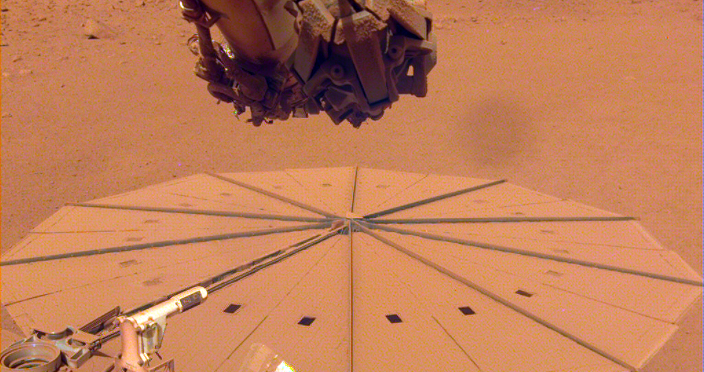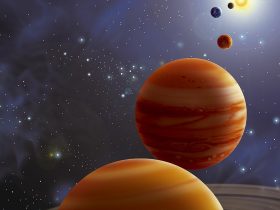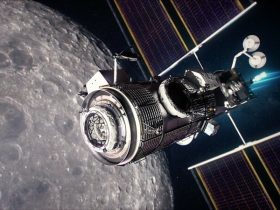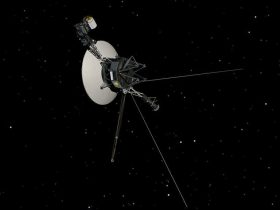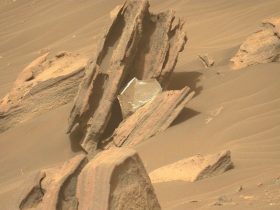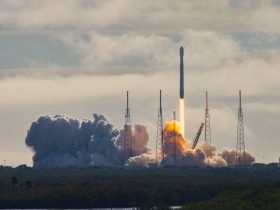After detecting over 1,300 Martian quakes, NASA’s InSight lander will quickly run out of energy.
A thick layer of pink mud has coated the landmark robotic’s photo voltaic panels, depriving the geologic sleuth of the facility it must proceed investigating Mars’ inside. The house company expects to close down InSight’s science mission, notably the usage of its temblor-detecting seismometer, over the summer time. By yr’s finish, InSight’s profitable, almost four-year mission will probably finish.
“InSight might be coming to the tip of its scientific life fairly quickly,” Bruce Banerdt, InSight’s principal investigator at NASA’s Jet Propulsion Laboratory, stated at a press briefing on Could 17.
A GIF NASA shared this week provides a vivid take a look at why InSight’s energy is diminishing. The primary picture is from December 2018. The second picture, exhibiting pink mud on the 2 photo voltaic panels, is from InSight’s closing selfie, taken on April 24, 2022. By then, InSight had spent 1,211 Martian days, or sols, on the dusty desert planet.

- NASA’s ‘mole’ tried to dig into Mars. It did not go as deliberate.
- Mars rover rumbles by crashed artifacts within the Martian desert
- Compelling Mars photograph reveals Martian water flowed far more not too long ago than we predict
Only recently, the lander detected its largest quake but, the strongest temblor ever detected on one other planet. It was a magnitude 5 quake, one thing potent sufficient to be felt regionally on Earth, however a real “monster” for Mars. The seismic occasion underscored that Mars is not almost useless, geologically.
“Mars stays lively, simply not as lively as Earth,” Mark Panning, a planetary scientist and NASA’s InSight lander challenge supervisor, instructed Mashable.
Along with observing extraterrestrial marsquakes, the InSight lander additionally collected each day climate stories, detected the pink planet’s giant, liquid core, and helped researchers map Mars’ interior geology.
Elsewhere on Mars, NASA’s nuclear-powered robotic rovers, Perseverance and Curiosity, proceed to rumble over the pink planet and sleuth out proof of previous microbial life — ought to any have ever existed.
Observe Mashable SEA on Fb, Twitter, Instagram, YouTube, and Telegram.


